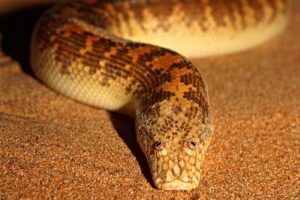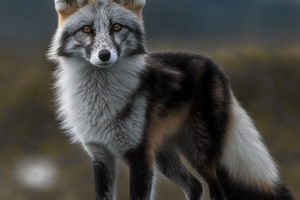Types of fireplaces
There are various types of fireplaces.
In particular, fireplaces are divided into three main categories:
- Shield volcano
- Volcanic cones (strato volcano or composite volcano)
- fissure vent
In general, a volcano can be said to be where openings or cracks form in the surface of the earth’s crust so that lava and gas can reach the surface.
Magma is molten rock from the Earth’s mantle, and when it reaches the surface in a volcanic eruption, it solidifies and becomes lava.
In general, it also applies that the gas and silicon content (silicon is a so-called semi-metal) determines the form the volcano takes and thus how it is classified.
Thin-flowing lava spreads over a long distance and forms wide but relatively low volcanoes, which are usually called piles. Thicker magma forms taller volcanoes such as volcanic cones, but volcanic ridges can also reach great heights.
Dungjar
- Appearance: A vast but rather flat volcano.
- Characteristics: Thin liquid magma.
- Location: At hotspots, such as Iceland and Hawaii or underwater at plate junctions where the crustal plates move apart and new land rises.
- Examples of piles: Skjaldbreður in Iceland, Kilauea and Mauna Loa in Hawaii and Piton de la Fournaise on Reunion Island in the Indian Ocean.
Sledgehammers might resemble a knight’s shield
It is a thin-flowing magma that gradually builds up piles. The magma can flow very far from the source before it solidifies.
Dingjar could thus resemble a huge shield lying flat on the ground.
Long and sloping slopes characterize the dunes and this further reduces the slope at the top. Even low piles can therefore cover a very large area.
Diagram
One of the largest mounds on Earth is Mauna Loa in Hawaii, a volcano that is still active.
Dyngjur is the type of volcano that erupts most often. On the other hand, the eruptions are rarely violent and explosive eruptions are rare because very little water is in the magma or comes into contact with it.
When water enters the path of the magma, it immediately evaporates and expands so much that an explosive eruption can occur, as, for example, when an eruption occurs under a glacier. But the less water, the less risk of explosion.
Fire cones
- Appearance: Conical volcano with steep slopes.
- Characteristics: Thick-flowing lava magma.
- Location: It is most common for cones of fire to form at plate junctions where the plates of the earth’s crust collide and one slides under the other and disappears into the depths.
- Examples of cones of fire: Vesuvius, which erupted in 79 AD and completely destroyed the Italian towns of Pompeii and Herculeanum, Payon in the Philippines and Mount Momotombo in Nicaragua. There are only three volcanoes in Iceland: Snæfellsjökull, Eyjafjallajökull and Öræfajökull.
Children draw cones of fire
Cones are those typical volcanoes that you often see children drawing, when they draw a volcano, a tall mountain with steep slopes. It is precisely this shape that is behind the Icelandic name.
It is mainly a somewhat triangular shape that characterizes the fire cones. But they can also get quite high, and on the slopes there are often layers of lava and igneous rock.
Diagram
The highest volcano in the world is called Nevada Ojos de Salado. This mountain is in Chile and has a height of 6,887 meters.
The height of the volcanic cones is caused by slow-flowing magma with high silicic acid.
Silicic acid is a metal oxide called SiO 2 or silicon oxide and is precisely the most common substance in the earth’s crust.
Because of how thick this lava flow is, it solidifies on its way down the mountainside.
Volcanic cones rarely erupt, but this is believed to be due to the fact that solidified rock can retain new magma for quite some time.
But when a cone of fire erupts on another level, the eruption can become very violent.
The reason is that the rock magma contains a considerable amount of water. When the water manages to evaporate, it blasts the rock mass from above into shreds when the eruption begins.
The best-known example of a catastrophic eruption in a cone of fire is the eruption of Vesuvius in 79 AD, which among other things buried the city of Pompeius in glowing hot volcanic ash.
But a large part of the globe’s volcanic cones are in the Pacific Ocean, where they form the so-called Ring of Fire together with other volcanoes.
Volcanic ridges and fissure eruptions
- Appearance: Cracks on flat land that can form volcanic ridges.
- Symptoms: Lava flow of varying thickness. Thin-flowing magma can flow long distances.
- Location: Fissures form mainly at tectonic plate junctions, where crustal plates move apart and where new land can rise from the sea.
- Example of a volcanic ridge: Hekla, the most famous volcano in Iceland is a volcanic ridge and in Heklugos erupts from fissures in the mountain rather than one single crater. Fissure eruptions rarely form entire mountains. The most famous fissure eruption was in Lakagíg in 1783.
Fissile eruptions can form a volcanic ridge or dike
Fissure eruptions rarely form volcanic ridges such as Hekla. When the magma that emerges from the fissure – or series of craters – is thin-flowing, it flows a long way, and when Reykjanes began to erupt in 2021, Icelandic geophysicists mentioned the possibility that we might be seeing the beginning of the formation of a dynge.
Fissure eruptions are best observed in those areas of the world where the earth’s crustal plates are moving apart, but Iceland has been formed in such an area over a long period of time.
Fissure eruptions are therefore quite frequent and we can mention Skaftárelda (the eruption in Lakagíg), Krafluelda in the last century and most recently the fissure eruptions in Reykjanes – as well as Hekla itself.
Diagram
The most recent example of a fissure eruption in Iceland is the eruption that began south of Fagradalsfjall on March 19, 2021.
Before the eruption in Reykjanes began, there had not been an eruption in that area for 800 years, but no one knows how long this eruption will last.
Maybe it will end soon, but it could also last – probably intermittently – for decades or even centuries.












